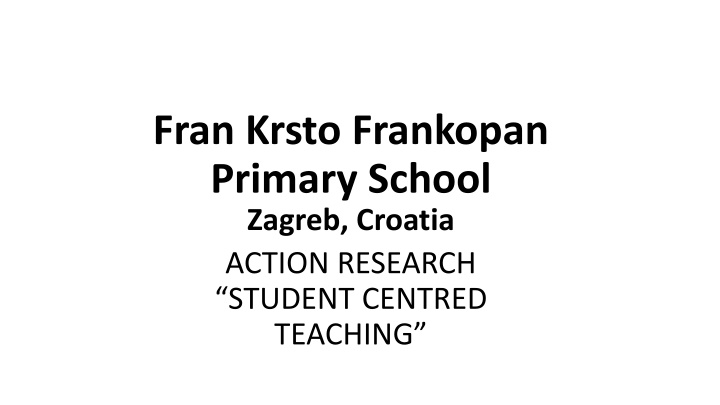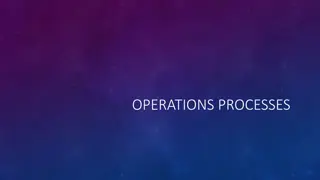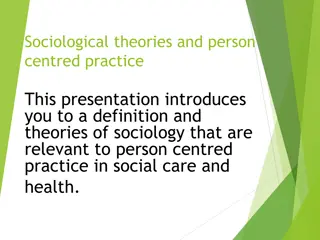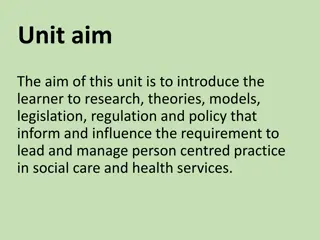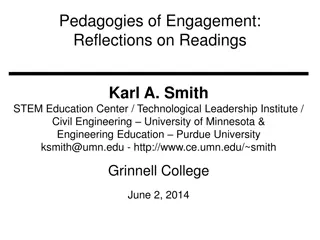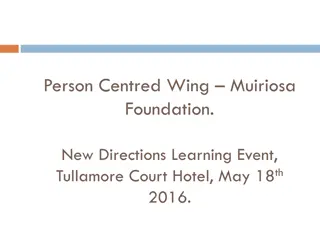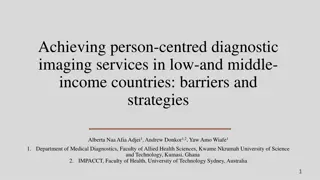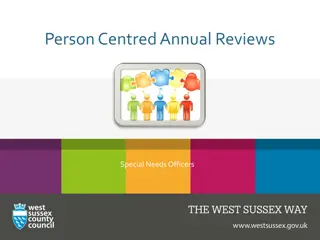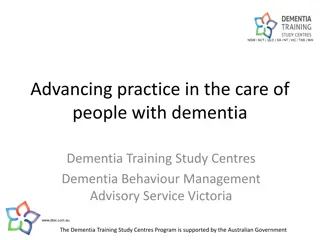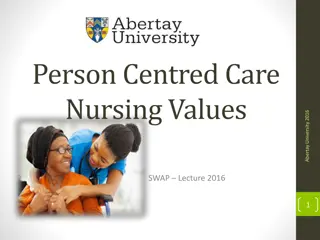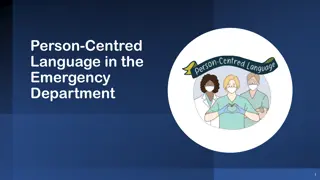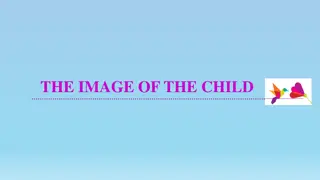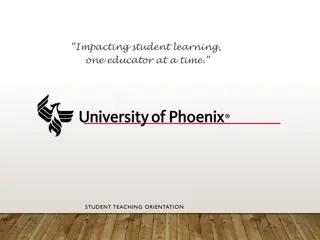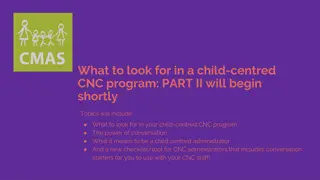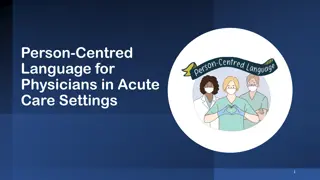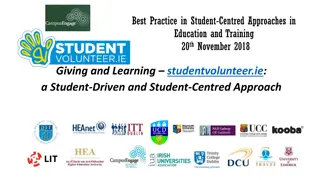Transforming Education Through Student-Centred Teaching Practices
Explore how Fran Krsto Frankopan Primary School in Zagreb, Croatia implemented action research to enhance student-centred teaching strategies. Two classroom teachers led the initiative to shift the focus from teacher-led instruction to student engagement, fostering creativity, independence, and cooperative learning. The project aimed to create an inclusive educational environment that supports individual student needs while involving parents in the learning process. Through modern teaching methods and personalized approaches, the school focused on cognitive, emotional, and social development for all learners.
Uploaded on Sep 30, 2024 | 0 Views
Download Presentation

Please find below an Image/Link to download the presentation.
The content on the website is provided AS IS for your information and personal use only. It may not be sold, licensed, or shared on other websites without obtaining consent from the author.If you encounter any issues during the download, it is possible that the publisher has removed the file from their server.
You are allowed to download the files provided on this website for personal or commercial use, subject to the condition that they are used lawfully. All files are the property of their respective owners.
The content on the website is provided AS IS for your information and personal use only. It may not be sold, licensed, or shared on other websites without obtaining consent from the author.
E N D
Presentation Transcript
Fran Krsto Frankopan Primary School Zagreb, Croatia ACTION RESEARCH STUDENT CENTRED TEACHING
Our Education System Everybody is a genius. But if you judge a fish by its ability to climb a tree, it will live its whole life believing that it is stupid. - Albert Einstein
Teachers Strategy: Student-centred teaching Based on the results Action research two classroom teachers Sanja Bo i (4.b) and Irena Mihaljevi (3.a) during the school year 2010-2011. Includes work on modern strategies and methods that were implemented during the action research. Action research was conducted as part of research projects at the Faculty of Teacher Education: New Educational Technologies and Lifelong Learning, Learning by Discovery and Research in teaching nature and society. The research was carried out under the authority of the Ministry of Science, Education and Sports, with the consent of parents.
Starting point: What do I want to improve? How to switch the focus of instruction from teacher to students? How to create an environment that supports learning? How to involve parents in the educational process? How to implement various strategies to encourage responsibility, creativity, independence, cooperation and level of educational achievement for all learners? How to plan, monitor and evaluate development progress of students? How to organize an individualized learning process? How to upbringing educational objectives to life approach? How to encourage cognitive, emotional and social development of students, taking into account the individual needs of all students, their experience and skills? How to enable each student to progress according to his needs?
Common Characteristics: Background Creating the environment that supports learning emphasis Interaction "one on one" between students and teachers Allowing the flexible structure of the educational process and emphasize students' independence in decision-making Implementation of elements of reform pedagogy through action research (Montessori, Waldorf, Step by step, Freinet pedagogy)
According to indicators of quality, related to educational standards, the following outcomes are visible (1): Pupils attitude to learning: their understanding of themselves and others and their levels of attainment pupils enjoy their learning, are motivated to learn, and expect to achieve as learners Pupils learning outcomes: they demonstrate the knowledge, skills and understanding required by the primary curriculum, they achieve the stated learning objectives for the term and year Pupils learning experiences: demonstrated in levels of engagement as learners, self-reflection as learners about their progress and development as lifelong learners.
According to indicators of quality, related to educational standards, the following outcomes are visible (2): Teachers individual practice: teachers knowledge and skills, their use of practices that progress pupils learning, their use of appropriate teaching strategies and their responsiveness to individual learning needs. Teachers collaborative practice: teachers professional development and collaboration, their co-operation to extend pupils learning opportunities, their collective use of reliable assessment practices, they value and engage in professional development and professional collaboration, contribute to building whole-staff capacity by sharing their example and expertise.
Key learning points from this example Introduction and use of teaching strategies focused on students, the following results are achieved: Increases the intrinsic motivation of students Promotes the interpersonal communication Reduced disruptive behaviour Builds up a quality relationship of teachers and students Promotes the research / active learning The growing responsibility of students, related to learning Increases the efficiency and productivity of each student
A hundred years from now it will not matter what my bank account was, the sort of house I lived in, or the kind of car I drove... but the world may be different because I was important in the life of a child. (Forest E. Witcraft, teacher)
Never doubt that a small group of thoughtful, committed, citizens can change the world. Indeed, it is the only thing that ever has. (Margaret Mead)
